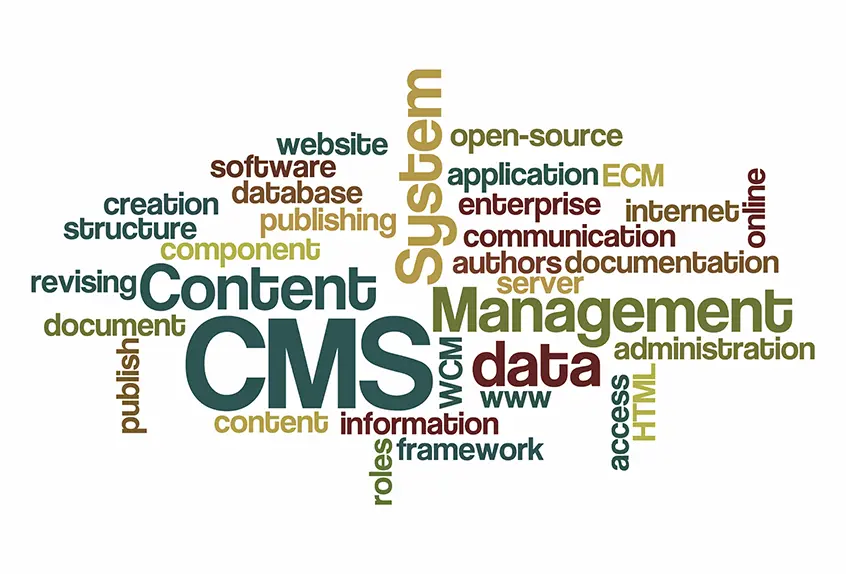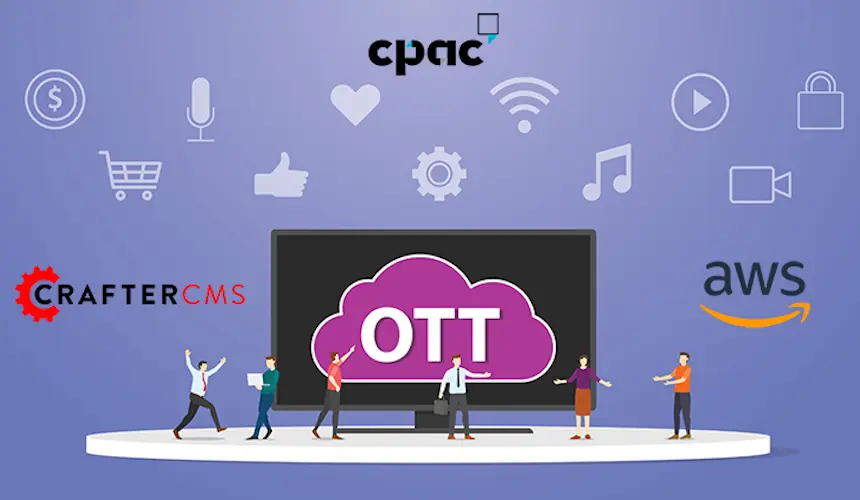Choosing an Enterprise CMS: Must-Have Features for 2022

Mike Vertal

Given the wide range of options on the market, choosing an enterprise-grade CMS can be a tricky task. Take a wrong step, and you will restrict developers and content creators with cumbersome and rigid software that can drain your company’s resources. In the long run, you also make your business susceptible to disruption due to emerging technologies and changes in the market.
A report from Allied Market Research indicates that the enterprise CMS market could reach $94 billion by 2023. As companies have had to adjust their business workflows and the way they manage content experiences, the almost 20% growth since 2017 could even continue for the foreseeable future.
By selecting the right CMS for your enterprise, you can create engaging content-driven digital experiences across many channels to drive business outcomes. This article will dive into the must-have features of an enterprise CMS and the stakeholders your CMS needs to cater to.
What Is an Enterprise CMS?
An enterprise CMS is a content management system that is equipped with all of the features for mid- to large-scale organizations that need to build, operate, and deliver a wide variety of content-driven digital experiences.
The primary purpose of any CMS is to create, manage and publish content. But a modern enterprise CMS must be so much more. It must enable developers to use the latest technologies to build the applications that deliver the content to a variety of audiences via a variety of digital channels – not just websites but also mobile apps, employee intranets, customer and partner portals, OTT video experiences, e-commerce front-ends, IoT, Alexa devices, AR/VR, among others.
An enterprise CMS must also enable marketers and other business users to contribute toward building the types of content experiences that engage customers, employees, partners and others, and do so without the help of IT. Business users and IT should collaborate, but each should not be dependent on the other to get their jobs done.
This means providing a CMS platform that caters to the needs of both content teams and developer / DevOps teams. And as with any enterprise solution, it must be highly secure, scalable, cost effective, and must easily integrate with other tools in the enterprise tech stack like a CRM, e-commerce backends, analytics, DAM, and more.
Stakeholders to Consider When Choosing an Enterprise CMS
Enterprise organizations have larger teams than may be found at startups or other small businesses, meaning that your technology solutions need to cater to many different groups. Here are some of the key stakeholders you should consider when selecting an enterprise CMS as the platform will need to cater to their needs.
Marketing and Content Authors
Marketers and other content authors need to be able to create engaging customer experiences. Many of them will also be familiar with the user-friendly features of a traditional CMS platform. You need to provide them with user-friendly and powerful content creation and editing functionality so that they can create, edit and publish content to multiple channels.
Developers
Software development teams are crucial for building frontend experiences using different frameworks and technologies, and for implementing custom backend functionality, APIs, and integrations. They need an API-first headless development platform to enable them to build these experiences using technologies that fit each job best and that they’re familiar with. In addition, a CMS should save them time when they need to integrate with other tools in the tech stack.
IT Operations and DevOps
The IT operations team will also be concerned with issues of security, monitoring, scalability, availability, upgrades, support for CI/CD processes and tools, and so much more. Even if you opt for a SaaS/PaaS CMS in the cloud, any enterprise IT Ops team will have several concerns. The key will be choosing a CMS that is proven to work in the most demanding global enterprises.
What Type of Enterprise CMS Architecture Is Best? (Traditional vs. Modern Approach)
There are primarily two architectural approaches for enterprise CMSs, traditional and headless. While there are variations of each approach that can offer more features and functionality, enterprise businesses will typically opt for one or the other.
Traditional enterprise CMSs tightly couple the frontend and backend layers as one unit. Platforms like WordPress, Drupal, Liferay, Sitecore, Adobe AEM and more fall into this category. These traditional architectures can also be found in monolithic DXPs that offer several additional features enterprises might need as part of an all-in-one suite.
On the other hand, a headless CMS decouples the frontend presentation layer and backend content repository to provide added flexibility and remove many of the restrictive limitations of traditional platforms. A headless CMS provides that agility and flexibility that enterprise businesses need today, and it also facilitates modern approaches to enterprise architecture, namely MACH and composability.
- MACH: The MACH approach incorporates microservices, APIs, cloud-native architecture, and headless platforms to build and operate enterprise applications. By breaking down monolithic architectures into smaller microservices and connecting them with APIs, enterprises can improve their agility and flexibility when compared to traditional approaches.
- Composability: Having the ability to compose business solutions promises to dramatically improve productivity of enterprise solutions, so any enterprise CMS should fit within a composable architecture. Furthermore, the ability to compose both content authoring experiences and audience experiences is a powerful concept when it’s easy to do. A modern CMS should enable composability, and should enable businesses to avoid all the restrictions and limitations that can arise with suite approaches.
Must-Have Features For an Enterprise CMS
An enterprise CMS must have the right features to cater to all the key stakeholders within the organization. Here are some of the features you’ll need to consider.
API-First Headless Platform
To fit within a MACH-based, composable architecture your enterprise CMS should be an API-first, headless content platform. To address enterprise needs for building and operating digital experiences now and into the future, developers require an agile platform that does not restrict them in any way, and allows them to use whichever frontend technologies and tools are best suited to the job at hand. For example, some web applications are best built as a SPA using React, Vue, or Angular, while others (e.g., microsites, landing pages) are best built using HTML5 templating technologies like Freemarker. Consider all the technologies now and the future for all your digital experience needs, not just websites but also AR/VR, e-commerce, OTT video, among others.
Extensible APIs
Fixed content APIs are only the starting point. Extensible APIs are crucial for optimizing performance, customizing functionality, and facilitating easy integrations in a software stack. Having extensible APIs enables developers to customize backend functionality with scripting languages like Groovy to build custom APIs to meet more application-specific requirements. In addition, integrations with various third-party systems need to be smooth so that all stakeholders can maximize the platform.
Experience Builder
Content teams always need easy-to-use and powerful content editing tools. But a modern enterprise CMS should take this a step further and provide experience building tools that enable content creators to compose end user experiences with drag/drop tools, in-context editing capabilities, digital asset management, multi-channel preview, personalization testing, and more.
Plug-ins
Enterprise users, both developers and content teams, need access to pre-built and reusable components to optimize productivity and eliminate duplicating efforts. An enterprise CMS should support a plug-in framework and a marketplace that contains easy to use plugins to save time and money.
Decoupled CMS Architecture
An enterprise CMS needs a truly decoupled architecture that separates the authoring system from the content delivery engine. Many platforms only view decoupling as separating the end user interface from the content repository. However, there is much better functionality, security, performance and scalability with a truly decoupled CMS architecture. Moreover, both the authoring and content delivery systems should be API-first headless platforms, allowing the composability of both authoring experiences and end user experiences.
Multi-channel, Multi-site, Multi-tenancy
An enterprise CMS architecture must be able to serve multiple roles, groups, sites, microsites, applications and deliver content to different channels. Having different software tools for each digital touchpoint is too cumbersome, particularly for organizations that have sites that span different audiences, regions and languages. An enterprise CMS should serve as a centralized platform to support various use cases to manage everything much easier.
DevContentOps
The primary stakeholders in any enterprise organization, particularly content, developer, and operations teams, need to be able to communicate and collaborate effectively. With DevContentOps support, these teams can collaborate so much more effectively as the bottlenecks of traditional CMSs are eliminated.
CrafterCMS: Everything Your Enterprise Needs Now and In the Future
At a time when enterprise-scale businesses need to be able to innovate quickly and launch new digital experiences while remaining agile and adaptable, selecting a CMS that follows the traditional approaches to content management is setting you up for failure.
CrafterCMS provides an API-first headless platform that fits within a MACH-based composable enterprise architecture. It provides developers with an extensible and scalable development platform for building all types of digital applications, and provides content teams with powerful content authoring tools and an experience builder for quickly creating all types of engaging, content-driven experiences across a variety of digital channels.
Learn how CrafterCMS can deliver on what your enterprise needs in our White Paper: 7 Reasons Why Crafter Should Be On Your Web CMS Shortlist.
Related Posts

Websites Are Dead?

Mike Vertal

No-Code Experience Building for Marketers & Designers

Amanda Lee

The Future of Web Experiences: From Browsing and Searching to Conversational AI

Mike Vertal

Is Your CMS MACH-Ready? A Practical Guide for Enterprise Architects

Sara Williams
Related Resources
-

CrafterCMS at eBay: The Universal Content Platform for eBay.com
Webcast
-

Personalized Digital Experiences for a Cruise Liner
Webcast
-

Introducing CrafterCMS v4.0
Webcast
-

Modernizing Video Delivery and Content Management at CPAC, A Canadian Nationwide Broadcaster
Webcast
-

Building React Apps on a Headless CMS
White Paper





